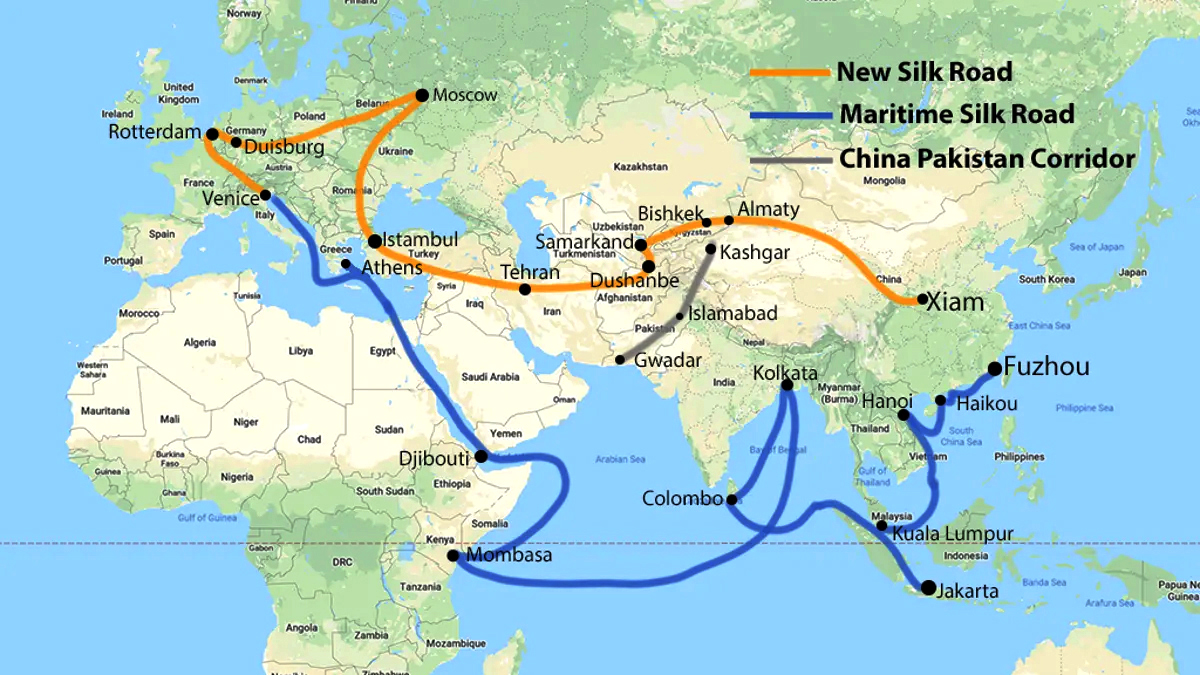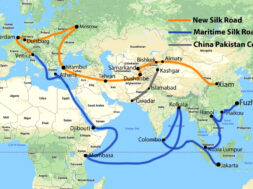
Roving Periscope: A decade after brouhaha, China tries to relaunch its BRI
Virendra Pandit
New Delhi: That China’s multinational dream project, the Belt and Road Initiative (BRI), may have turned into a nightmare for many was no secret. Even India’s neighbor has seen the BRI’s flagship, the China-Pakistan Economic Corridor (CPEC), go nowhere near completion after a decade.
Sri Lanka, Kenya, Zambia, Malaysia…Italy. These and more countries, after initial enthusiasm, have either had second thoughts, tried to wriggle out of the BRI projects, or did whatever they could to get away from it all.
They were ecstatic about the potential of BRI, a mega-infrastructure scheme launched in 2013 that would connect the world through ports, power grids, railways, roads, and telecommunications networks. Alarmed, the West worried these projects were drawing the beneficiary countries into the Dragon’s orbit, enriching Chinese companies, and reshaping a Sinocentric global order.
China invested hundreds of billions of dollars in these multiple projects—USD 60 billion in the CPEC alone– by way of loans, grants, and the like to woo some 140 countries. Beijing never clarified the kinds of investments nor produced an official list of BRI projects, according to the media reports.
After tasting some initial success in wooing investment-hungry countries, China even expanded the BRI’s ambit, which initially comprised the land-based Silk Road Economic Belt and the Maritime Silk Road Initiative, to reaching into the Pacific Islands, the Arctic, and even extraterrestrial space.
Then the mysterious origins and impact of COVID-19 worldwide burst the bubble as many countries suspected the Dragon feasting on the victims’ corpses. One by one, they found excuses to exit the BRI dragnet. Because of the debt trap, Sri Lanka faced the worst economic and political crisis since its independence from Britain in 1948 and Pakistan continues to suffer with the unfolding aftereffects of CPEC.
Even before the Third BRI Forum held in Beijing in October 2023, some experts proclaimed the BRI’s collapse. Europe took the lead. Italy opted out and Greece lost interest despite the initial success of Athens’ BRI-linked Piraeus port.
Driven by domestic economic constraints, financial problems with BRI participants, project loans, and some political string-pulling from the West, contracts for Beijing started shrinking, the media reported.
In fact, even the Chinese may have lost interest in the BRI, which now hangs around their neck as an albatross. But it is still a prestige issue for its founder, President Xi Jinping, who is trying to reboot it with another layer of grease and paint.
So, facing an uncertain future, Beijing has shifted attention from mega-projects towards a “smaller, greener, and more beautiful” initiative featuring solar and wind power, ICT infrastructure, and ports.
The problem is, unlike the crude, this new green energy is available aplenty to many countries and they don’t need huge Chinese investments to develop their projects.
The diminishing importance of the BRI for the beneficiary countries and the corresponding geopolitical ambitions in Beijing can be judged from the fact that fewer heads of state/governments attended the BRI Forum last month. As against 37 in 2017 and 30 in 2019, only 23 came to attend it.
One big reason for the slow collapse of the BRI is the failure of an authoritarian China to take into account the complexities of infrastructure, and economic and political shortcomings of numerous BRI participant countries—many of them democratic—which adversely affected the BRI’s progress.
Even in Pakistan, for example, the progress was slow because of multiple political reasons, including in the restless Balochistan which is fighting for independence from Islamabad and killing Chinese workmen to halt progress in Gwadar port.
A key reason behind China’s BRI launch, and its expansion across continents, was the projected oil and gas energy flow from the Middle East directly into Xinjiang via the CPEC. With even the Middle East, such as Saudi Arabia and the UAE, thinking in terms of a post-petroleum era, the CPEC itself lost its sheen.
Domestic political challenges resulting from elections, center–local divides, civil war, terrorism, and public protests have repeatedly stunted, delayed, and prevented the implementation of BRI projects.
China’s own economic downturn since 2020 is another major reason for a rethink amongst countries about the viability of their BRI project.
With less than 45 days into 2024, China dreads another threat: child pneumonia.













